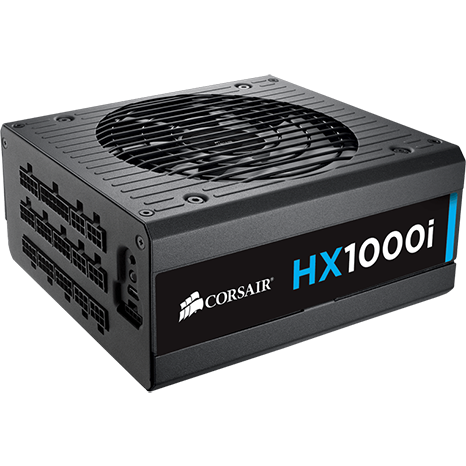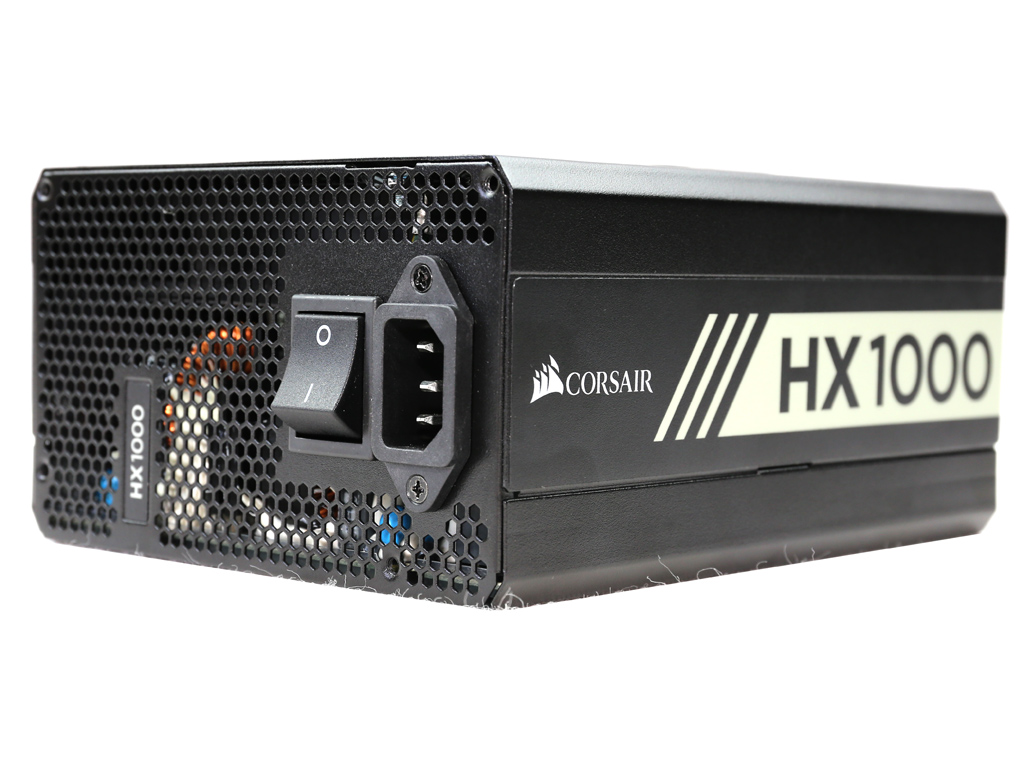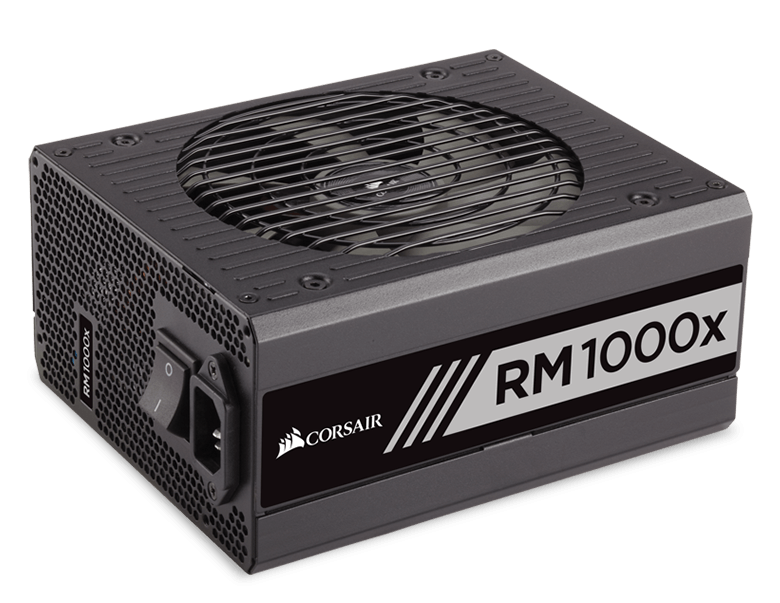Seasonic Prime Ultra Titanium 1000W PSU Review: Quiet Dominance
Why you can trust Tom's Hardware
Load Regulation, Hold-Up Time & Inrush Current
To learn more about our PSU tests and methodology, please check out How We Test Power Supply Units.
Primary Rails And 5VSB Load Regulation
Load Regulation testing is detailed here.
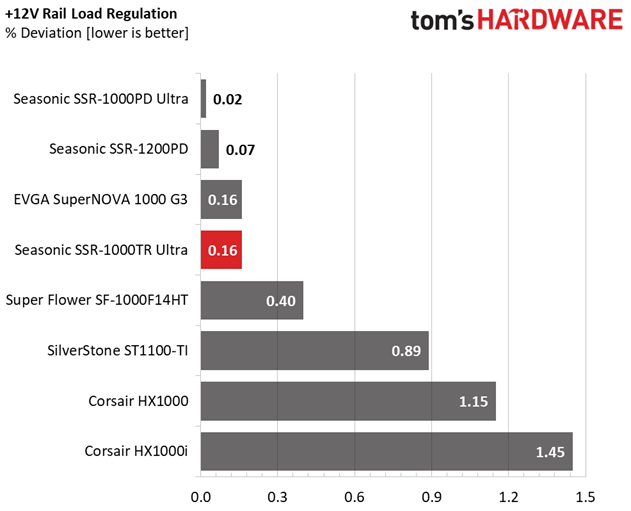
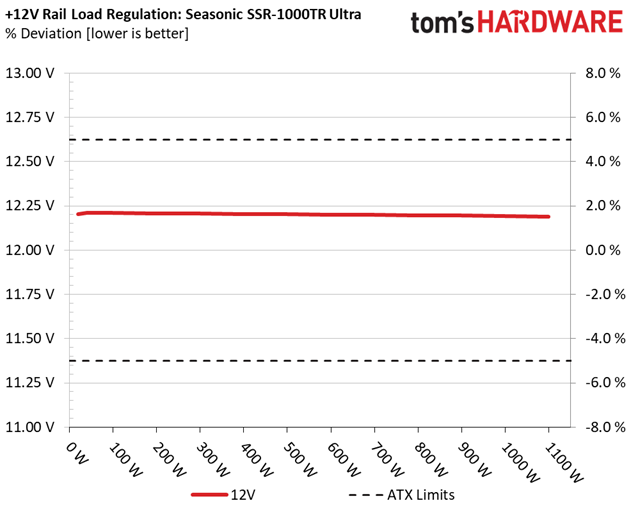
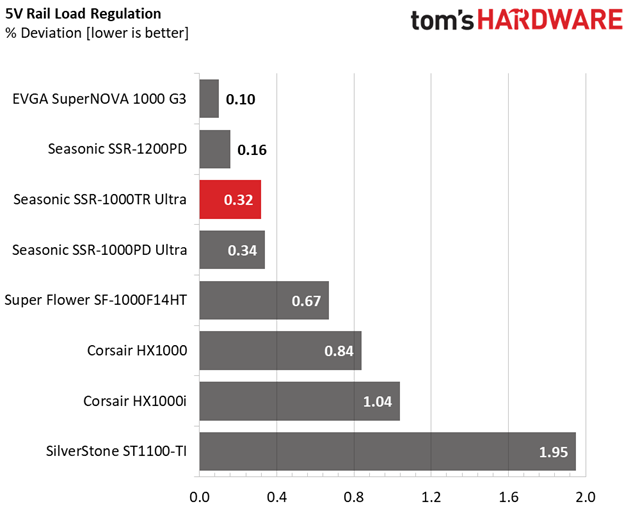

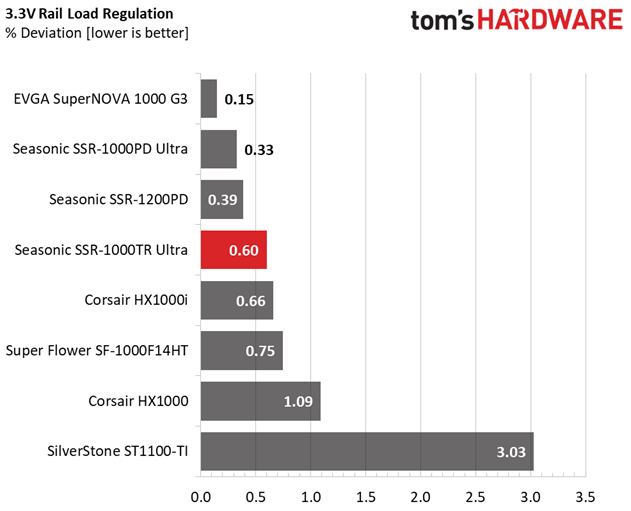
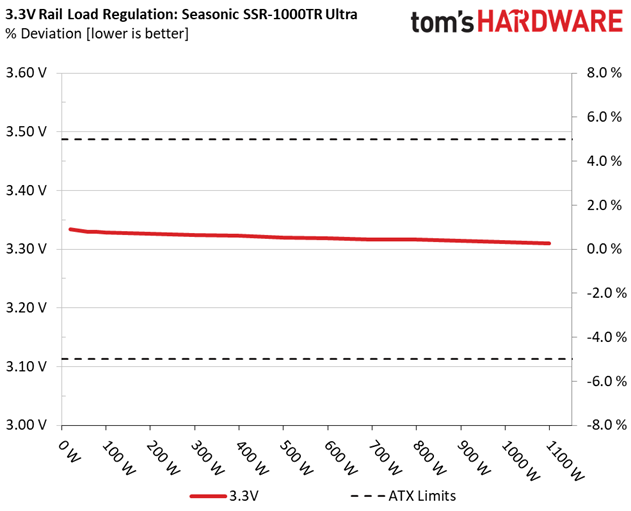
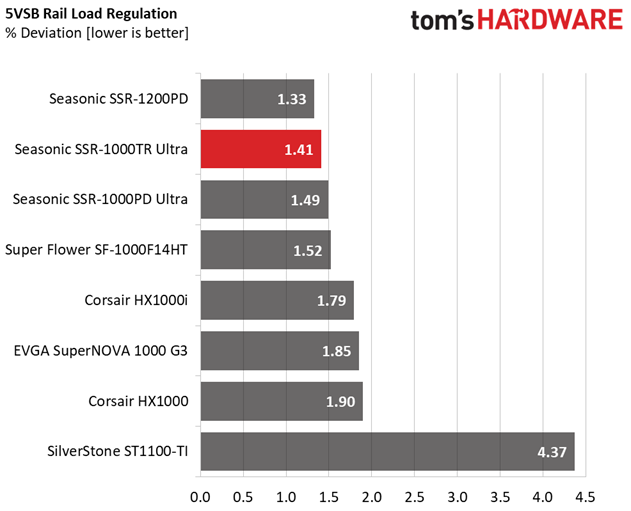
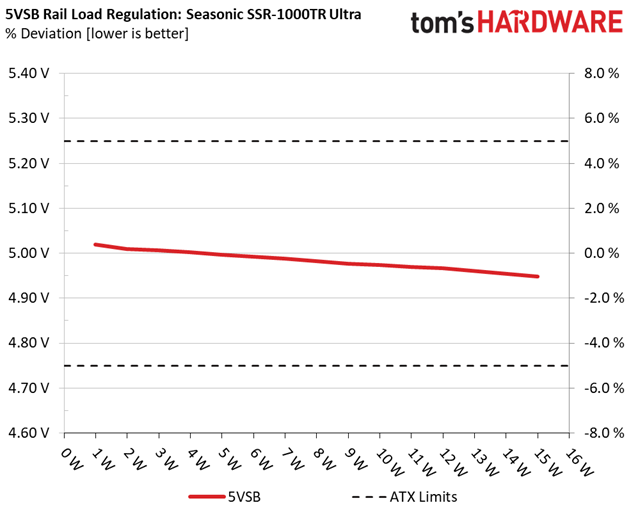
Hold-Up Time
Our hold-up time tests are described in detail here.
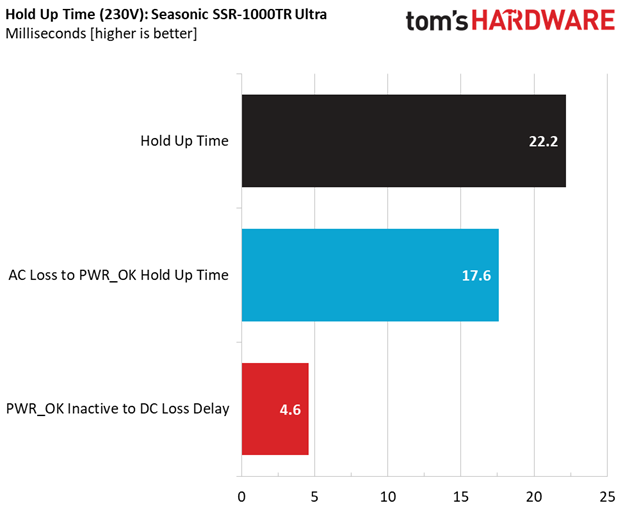
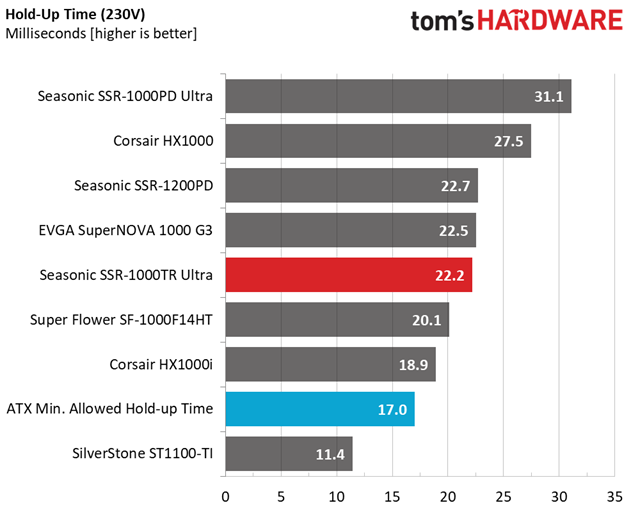
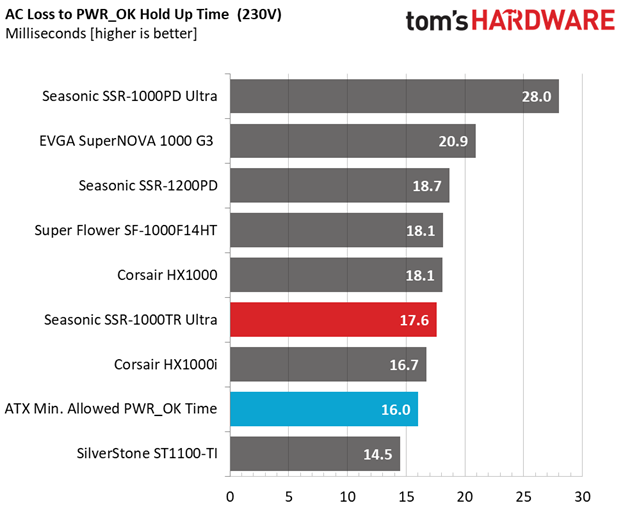
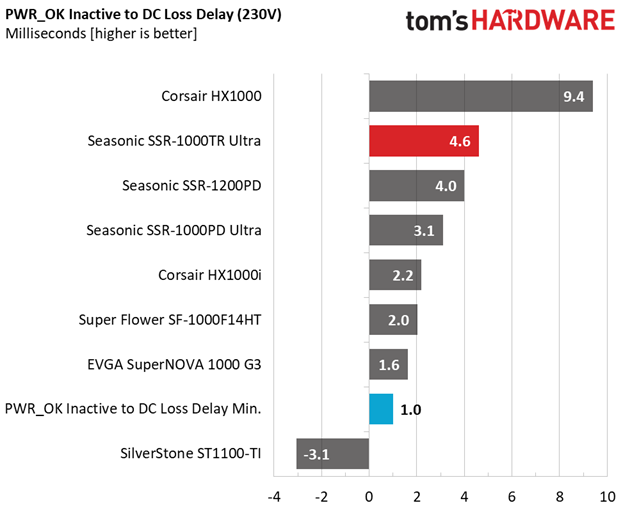
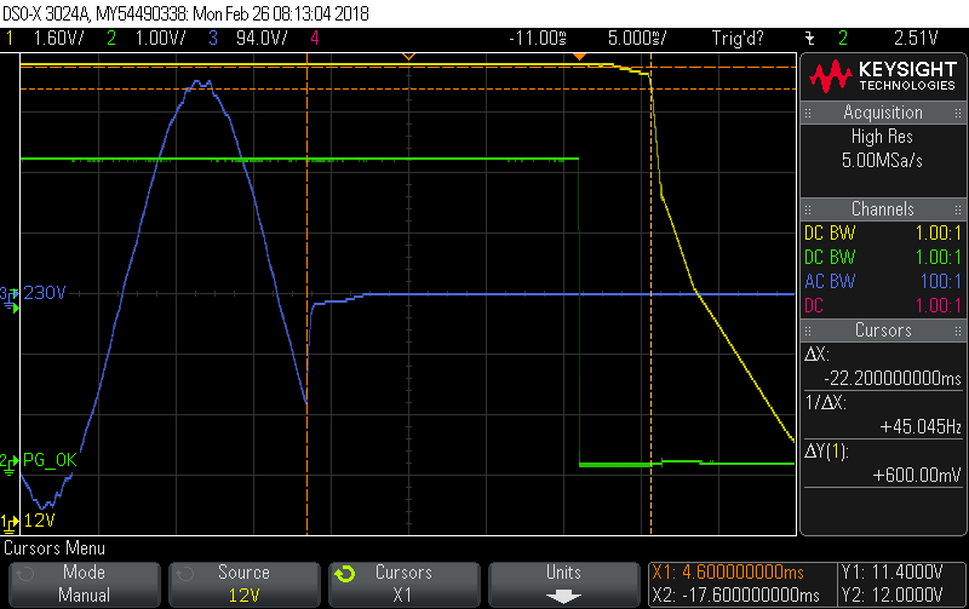
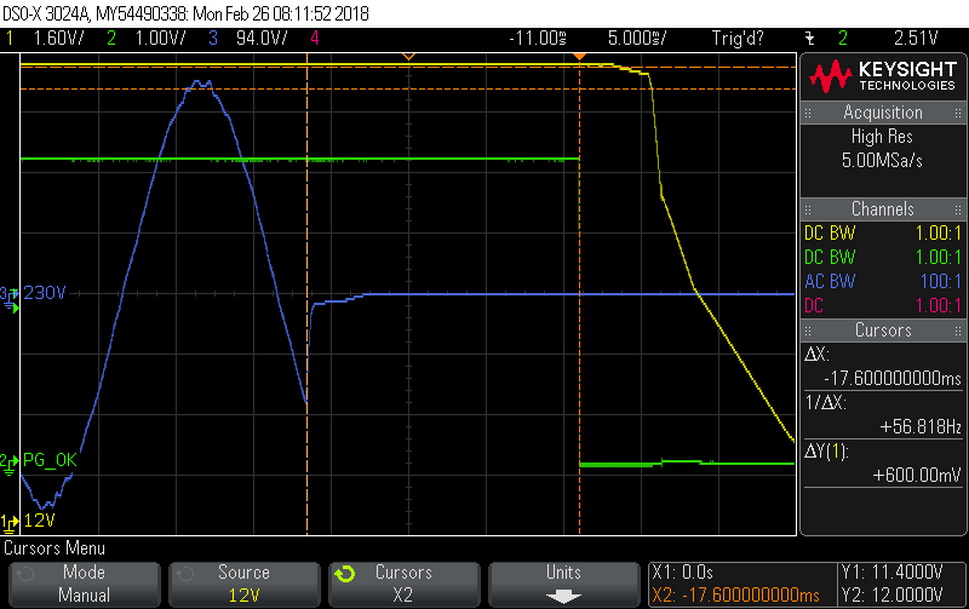
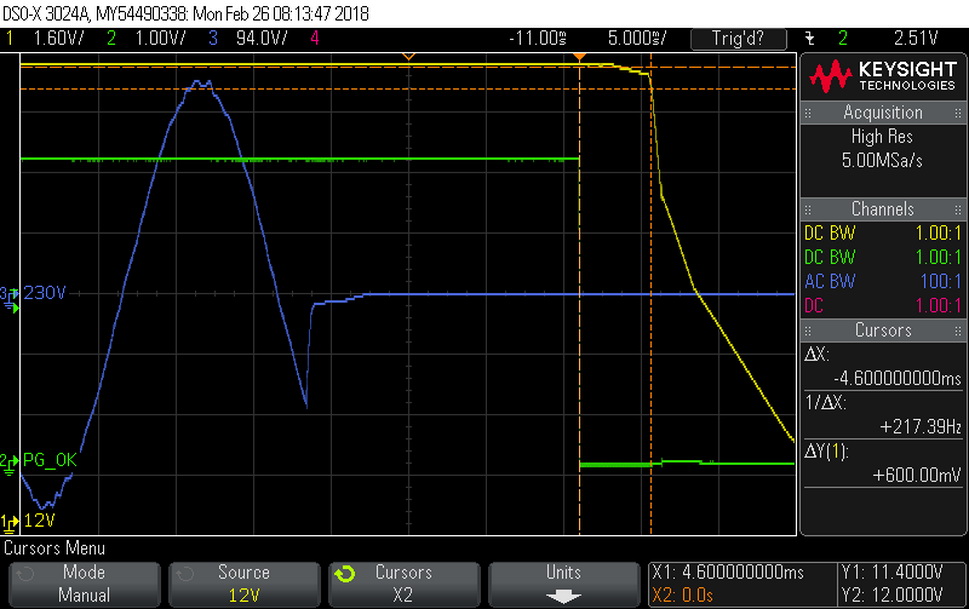
The hold-up time we measure is longer than 17ms, while the power-good signal is accurate.
Inrush Current
For details on our inrush current testing, please click here.
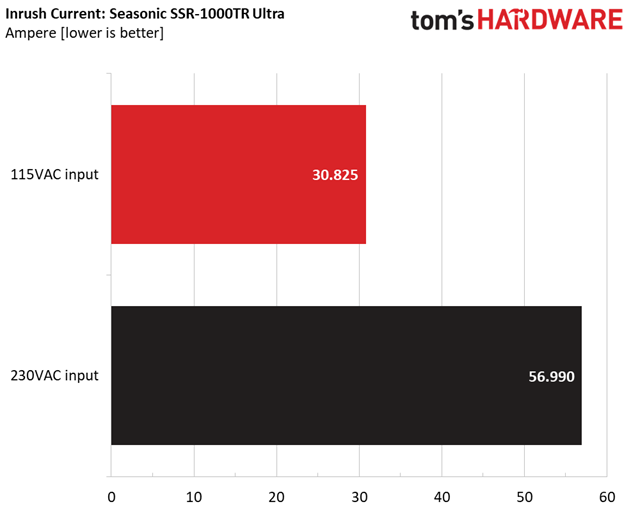
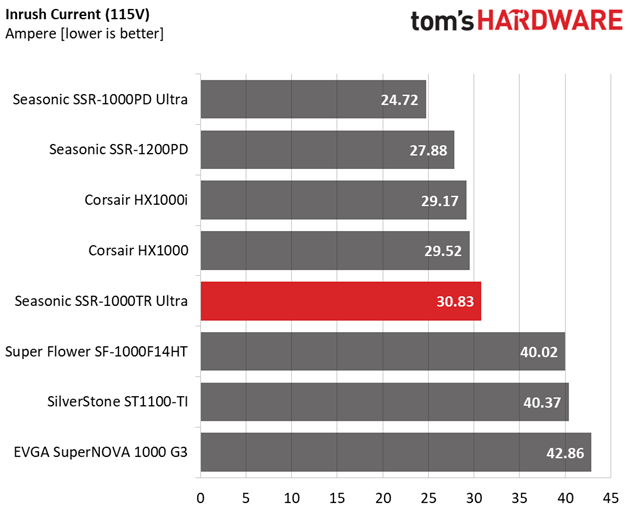
The inrush current is at normal levels with both voltage inputs.
Load Regulation And Efficiency Measurements
The first set of tests reveals the stability of the voltage rails and the SSR-1000TR’s efficiency. The applied load equals (approximately) 10 to 110 percent of the PSU's maximum load in increments of 10 percentage points.
Get Tom's Hardware's best news and in-depth reviews, straight to your inbox.
We conducted two additional tests. During the first, we stressed the two minor rails (5V and 3.3V) with a high load, while the load at +12V was only 0.1A. This test reveals whether a PSU is compatible with Intel's C6/C7 sleep states or not. In the second test, we determined the maximum load the +12V rail could handle with minimal load on the minor rails.
| Test # | 12V | 5V | 3.3V | 5VSB | DC/AC (Watts) | Efficiency | Fan Speed | PSU Noise | Temps (In/Out) | PF/AC Volts |
|---|---|---|---|---|---|---|---|---|---|---|
| 1 | 6.408A | 1.995A | 1.980A | 1.001A | 99.847 | 91.856% | 395 RPM | 10.5 dB(A) | 38.63°C | 0.975 |
| 12.210V | 5.019V | 3.329V | 4.996V | 108.699 | 48.04°C | 115.10V | ||||
| 2 | 13.832A | 2.985A | 2.975A | 1.201A | 199.715 | 93.543% | 395 RPM | 10.5 dB(A) | 39.27°C | 0.989 |
| 12.207V | 5.017V | 3.326V | 4.993V | 213.501 | 48.97°C | 115.10V | ||||
| 3 | 21.615A | 3.487A | 3.487A | 1.401A | 299.899 | 93.945% | 395 RPM | 10.5 dB(A) | 39.54°C | 0.995 |
| 12.206V | 5.015V | 3.324V | 4.988V | 319.227 | 49.51°C | 115.07V | ||||
| 4 | 29.382A | 3.991A | 3.970A | 1.605A | 399.743 | 93.518% | 435 RPM | 10.7 dB(A) | 39.82°C | 0.995 |
| 12.203V | 5.013V | 3.323V | 4.982V | 427.450 | 50.29°C | 115.07V | ||||
| 5 | 36.813A | 4.983A | 4.964A | 1.806A | 499.636 | 92.971% | 310 RPM | 9.4 dB(A) | 40.53°C | 0.994 |
| 12.202V | 5.012V | 3.320V | 4.977V | 537.410 | 51.29°C | 115.06V | ||||
| 6 | 44.250A | 5.985A | 5.961A | 2.010A | 599.618 | 92.354% | 430 RPM | 10.8 dB(A) | 41.83°C | 0.994 |
| 12.200V | 5.010V | 3.319V | 4.974V | 649.260 | 52.87°C | 115.04V | ||||
| 7 | 51.682A | 6.992A | 6.961A | 2.210A | 699.566 | 91.687% | 525 RPM | 13.8 dB(A) | 42.08°C | 0.995 |
| 12.199V | 5.009V | 3.317V | 4.970V | 762.996 | 53.50°C | 115.05V | ||||
| 8 | 59.117A | 7.991A | 7.960A | 2.416A | 799.455 | 90.960% | 625 RPM | 19.5 dB(A) | 43.20°C | 0.996 |
| 12.197V | 5.007V | 3.316V | 4.966V | 878.906 | 54.80°C | 115.06V | ||||
| 9 | 66.981A | 8.488A | 8.479A | 2.416A | 899.412 | 90.196% | 1005 RPM | 32.0 dB(A) | 44.10°C | 0.997 |
| 12.195V | 5.005V | 3.314V | 4.966V | 997.171 | 55.90°C | 115.07V | ||||
| 10 | 74.610A | 9.001A | 8.968A | 3.030A | 999.381 | 89.252% | 1525 RPM | 42.8 dB(A) | 45.00°C | 0.997 |
| 12.192V | 5.004V | 3.312V | 4.948V | 1119.726 | 57.10°C | 115.10V | ||||
| 11 | 82.811A | 9.005A | 8.966A | 3.031A | 1099.178 | 88.448% | 1650 RPM | 45.8 dB(A) | 46.15°C | 0.997 |
| 12.190V | 5.002V | 3.310V | 4.946V | 1242.741 | 58.65°C | 115.11V | ||||
| CL1 | 0.100A | 15.021A | 15.005A | 0.005A | 126.588 | 88.385% | 540 RPM | 15.8 dB(A) | 43.61°C | 0.982 |
| 12.211V | 5.019V | 3.329V | 5.054V | 143.224 | 53.30°C | 115.10V | ||||
| CL2 | 82.929A | 1.002A | 1.003A | 1.002A | 1024.403 | 89.427% | 1490 RPM | 42.6 dB(A) | 44.70°C | 0.997 |
| 12.192V | 5.005V | 3.315V | 4.983V | 1145.519 | 56.48°C | 115.12V |
All of the rails offer great load regulation. However, Seasonic's SSR-1000PD registers better overall performance in this section. Frankly, we're not surprised. Since the SSD-1000TR emphasizes efficiency, compromises had to be made in other areas.
Speaking of efficiency, the 80 PLUS Titanium threshold is met with 10% load, and the same goes for 20% load. With 50% and 100% load, this PSU doesn't satisfy the Titanium certification's requirements. Then again, we also test at much higher ambient temperatures than 80 PLUS, so our results are expected. Regardless, this is still one of the most efficient 1kW PSUs.
Noise output remains low up to the 80% load test, and as you can see, the fan's speed drops with a 50% load. This happens because the fan starts spinning fast initially, and as its voltage input increases up to a certain threshold, speed decreases. Seasonic's trick allows for a low start-up fan voltage.
MORE: Best Power Supplies
MORE: How We Test Power Supplies
MORE: All Power Supply Content
Current page: Load Regulation, Hold-Up Time & Inrush Current
Prev Page Teardown & Component Analysis Next Page Efficiency, Temperature & Noise
Aris Mpitziopoulos is a contributing editor at Tom's Hardware, covering PSUs.
-
Nintendork I really wish companies focus on 300-550w Titanium PSU's, who the hell uses SLI/CF this days? Market is going multiCCX gpu's in the upcoming years.Reply
A Ryzen 2700X + Vega56/1070ti systems won't even draw past 375-400w. Most gaming PC's will stay at below 250w. Meanwhile for people who keep their PC 24/7 most of the time in idle, a contained PSU at titanium with 90% efficiency at 10% load is awesome.
My Bronze Seasonic S12-II 520w seems to be a gem with 82% efficiency at 10% load when most higher grade PSU's (gold/platinum) ignore this since they only need to comply with 85-90% minimum @20% load and then crapify to hell once you reach 15-10% load. -
Armando_0818 Just an FYI. CISPR 22 is no longer used. It has been updated to CISPR 32.Reply
Regards -
Aris_Mp Thank you! The limits are the same though for the conducted emissions that we measure and in general the products that pass the CISPR22 are likely to pass testing against CIPSR32.Reply
The CISPR22 was for information technology equipment while CIPSR32 is for multimedia stuff in general. -
zodiacfml Would you mind reviewing crypto PSUs from China? I have this Senlifang 2000W with 95 PLUS Gold sticker on it.Reply
I don't expect such efficiency until one day I plugged it to a system which previously has an 80 Plus Bronze - 650W PSU. The consumption on both PSUs are almost the same!
Adding to that, I've read somewhere that it is easier to have higher efficiencies on high wattage PSUs which I guess adds more credibility to the Senlifang PSU efficiency claims. -
Aris_Mp I don't believe that any of those manufacturers would be willing to send a review sample to me (or to any other PSU reviewer with proper equipment). The majority of them sell overrated stuff using bogus labels. Just be extra careful with those unknown PSU brands promising super high efficiency and wattage.Reply
